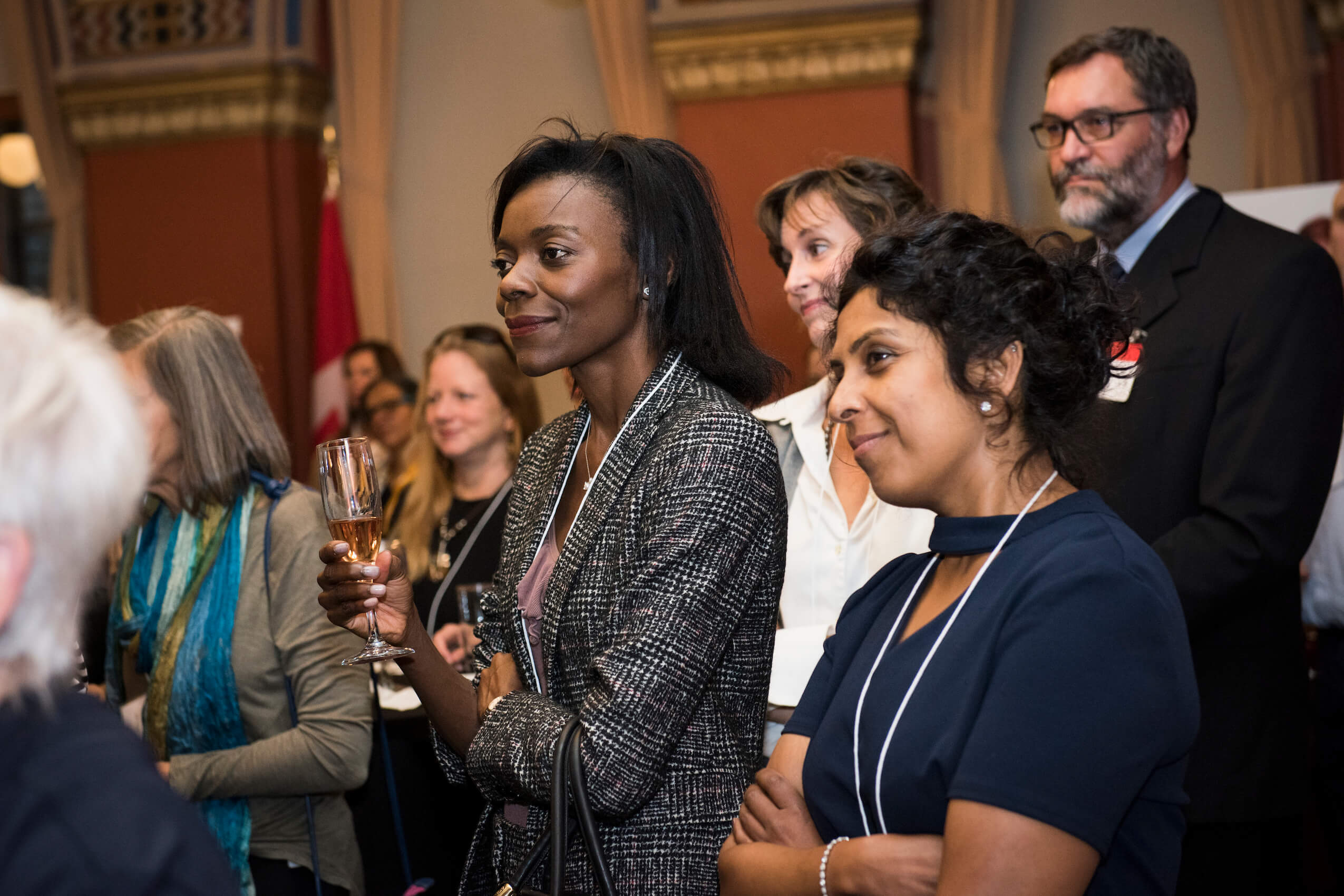4 incentives to liberate you from reading your speaking notes
by Shari Graydon
Photo by Product School on Unsplash
“I’m trying to sound smart.”
These words broke my heart when I heard them from a workshop participant last week.
The young woman who uttered them is so accomplished that she earned a coveted academic research grant usually awarded to PhD students even though she’d just completed a bachelor’s degree. She also speaks three languages.
And she had just read a small group of us the first five minutes of a presentation she’s preparing to give on research she’s conducting into a complex topic.
Her audience members for the upcoming presentation will be older, more educated and more experienced than she is. So of course she’s attached to sounding smart.
But she is smart. And her strategy of reading her prepared text — with its long, complex sentences and four-syllable words — was undermining, not enhancing, our perception of her intelligence.
This miscalculation is so common. Lots of us, when we’re intimidated by an audience, default to reading a prepared text, rather than simply speaking our content.
But here’s the thing: No one wants to listen to you read your presentation notes.
Truly. No one.
And we know this, because we’ve all sat through dozens of presenters doing it. Classmates and colleagues, but also university presidents, elected officials and corporate executives. They’ve all put us to sleep by reading aloud speaking notes in the hopes of sounding smooth and articulate.
(In some of these worlds, it’s often the case that someone else has drafted those speaking notes, so the ideas or sentences are not even their own. Having once made a living writing such speeches for others, I want to apologize for my role in perpetuating this practice!)
Here are 4 motivations for letting go of your script:
- Many people will stop listening to you reading your remarks three sentences in.
This is because we’ve all learned through experience that read-aloud content is likely to be unnecessary, hard to follow or boring.
By law, the flight attendant has to repeat the message we’ve heard on dozens of previous flights. And she frequently does so in a repetitive vocal pattern that fairly screams, “I’m getting through this as fast as I can so the pain is over for all of us.”
Similarly, the person introducing the main event speaker is usually sharing highlights of a bio we’ve already read (title, affiliation, most recent book — they’re in the program!), or don’t care about (degrees attained, board service performed — that’s not why we came!) And they’re often doing so with all the panache of a podiatrist explaining how bunions form.
So we’re used to tuning that out. But even though the content you’re planning to read might be of a much higher order than a flight announcement or rote bio introduction, it’s going to be hard for you to override the training we’ve previously received about what to expect from read-aloud material.
Especially if your delivery unconsciously mimics either of the above. Many people without theatre, broadcast or speaking training reflexively slip into a repetitive vocal pattern when they read material out loud. And when every sentence follows the same verbal trajectory, it robs the material of meaning. Audience members have to work harder to extract the takeaways from the transitions. (For examples of what I’m talking about, tune into any prepared speech delivered by the current premier of Ontario. Or try to sit through me reading the paragraph you’ve just read in exactly this way. It’s deadly.)
And if you’re reading long sentences featuring many subordinate clauses and five-syllable words, the absence of clarity may make us impatient. We find ourselves thinking, “How smart are you if you can’t actually make yourself understood?”
That said, many academic audiences are more tolerant of this behaviour than others. In another session I facilitated last week, Dean of Arts at the University of Guelph, Samantha Brennan confessed that because reading papers at academic conferences is de rigeur, scholars expect and/or are resigned to the practice. But she enthusiastically agreed with the premise of this post: your ability to engage and inspire an audience is much greater if you’re NOT reading your text.
2. We crave connection.
The COVID-19 pandemic has made this abundantly clear. Daily Zoom meetings, classes and social time have reminded us how inferior tech-mediated interactions are to the ones fuelled by kinetic energy. In pre-pandemic times, millions of people regularly abandoned the comforts of home and the reliability of Netflix to show up at a lecture hall, community centre or live theatre performance. Because the visceral exchange we get from being present in a room where other people are sharing ideas, evoking emotions and creating connections is so powerful.
It’s not impossible to make those things happen when you’re reading from a text. But it is much more difficult. You have to have an extraordinarily engaged audience of people who already know and deeply respect you. Or you have to be an exceptional performer: someone who can enliven lines off a page with the mastery of a trained actor.
Those descriptions don’t apply to most of us. And so if we’re given a temporarily captive audience, and we want to enlighten, inspire or entertain them, we’re going to want to talk to them, not read at them.
And a big part of this comes down to the fact that…
3. Eye contact is critical. Yes, even in Zoom times.
In advance of another webinar I delivered last week with a group of university faculty, the media relations manager who’d set up the session warned me that most participants might be reluctant to turn on their cameras.
I get that. We’re all exhausted by online meetings. But I’m not willing to emote into the void, and I invite you to push back, too. So when the session started, I said,
“In ordinary times, you would have had to wear pants to this workshop. I don’t care what you’re wearing, but I do need you to turn your cameras on so I can see whether or not you’re nodding in agreement, or nodding off from boredom.”
I’m pleased to report that they DID turn on their cameras. And they not only asked me lots of questions, but also offered each other invaluable feedback.

An engaged audience at a pre-pandemic Informed Opinions’ event
On Zoom or in person your eye contact tells the audience that you’re present, in the moment. Rather than imposing a pre-written text on them, you’re opening the door to a relationship that will allow you to co-create a shared experience.
Because you’re looking at them, you can see the confusion on their faces when you use a term they don’t understand, or inadvertently skip a page. You’ll notice if they’re distracted by their 4-year-old, talking to the person next to them, or all simultaneously horror-struck by the same emergency email from the company’s head office.
Ideally, you’re feeding off their nods of agreement, their laughter of recognition, the fact that they’re leaning in with anticipation. (And if, in pandemic times, someone IS distracted by her 4-year-old, and you don’t see it because you’re reading your notes, that will be especially awkward. Because everyone else on the Zoom call will be both distracted and aware that you’re oblivious. In that scenario, instead of directing the shared experience, you’re actually left out of it.)
4. Your audience desperately wants you to do better.
When people gather together in the knowledge that one or more presenters will be speaking, we do so hoping to be engaged and inspired.
Most of us have had at least a few experiences of being in the room with a speaker who shared insights, told stories or relayed information in an authentic and fully present way. A way that connected with our shared humanity, shifted our consciousness, provoked us to think or act differently. Where we left the event more energized than when we entered, grateful that we’d attended.
That’s what we all wish for.
And as a speaker, it is truly exhilarating to share the work you’re doing with others in a way that allows you to witness the light bulbs going off in their heads.
So, what to do if you’re dependent on notes? Stay tuned for the antidote in our next post…
If you’re not already receiving our twice-monthly blog, you can sign up for it here, and we’ll send you “7 ways to ditch your written text” in two weeks.
Shari Graydon is the Catalyst of Informed Opinions, a non-profit working to amplify women’s voices and ensure they have as much influence in Canada’s public conversations as men’s.
We train smart women to speak up more often and more effectively.
We make them easier for journalists to find.
And your donation can help ensure that women’s perspectives exert influence in every arena that matters.

